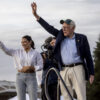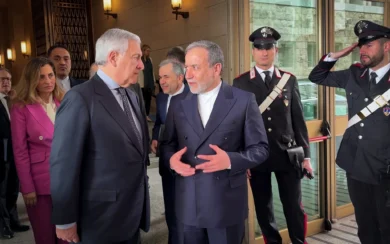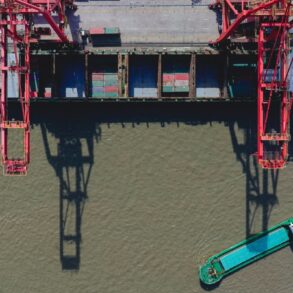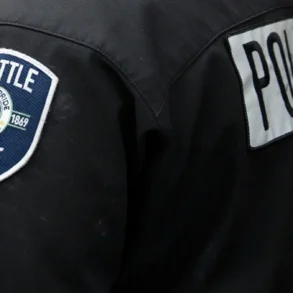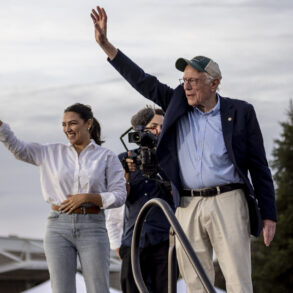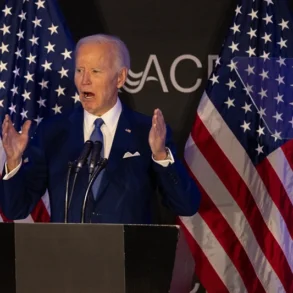In a world where tensions between nations often dominate headlines, a glimmer of hope emerged on April 19, 2025, as the United States and Iran concluded a second round of high-level nuclear talks in Rome. These discussions, mediated by Oman, mark a significant effort to address Iran’s nuclear program through diplomacy rather than confrontation. With both sides expressing cautious optimism, the talks signal a potential shift in a decades-long standoff, though challenges and skepticism remain.
A New Chapter in US-Iran Relations
The Rome negotiations followed an initial round held in Muscat, Oman, a week earlier. Led by U.S. Special Envoy Steve Witkoff and Iranian Foreign Minister Abbas Araghchi, the talks lasted about four hours and focused on finding a diplomatic path to curb Iran’s nuclear ambitions. Araghchi described the discussions as positive, noting, “I can say that there is movement forward. We’ve reached better understanding and agreement on some principles and goals in these Rome negotiations.” The Trump administration echoed this sentiment, with a senior official stating, “We made very good progress in our direct and indirect discussions.”
This progress is notable given the history of animosity between the two nations. The 2015 Joint Comprehensive Plan of Action (JCPOA), a landmark nuclear deal between Iran and world powers, including the U.S., unraveled when the Trump administration withdrew from it in 2018. Since then, Iran has exceeded the deal’s uranium enrichment limits, raising concerns about its nuclear capabilities. While Iran maintains it is not seeking a nuclear weapon, the international community remains wary.
Diplomatic Efforts Amid Global Tensions
The Rome talks were preceded by a flurry of diplomatic activity. Before arriving in Italy, Araghchi met with Russian President Vladimir Putin and Foreign Minister Sergey Lavrov in Moscow, signaling Russia’s continued support for Iran in any potential new agreement. Meanwhile, Witkoff held discussions in Paris with Israeli officials, including Ron Dermer and Mossad director David Barnea, as well as European allies from France, Germany, and the United Kingdom. Israel, which favors aggressive action over diplomacy, has been vocal about its concerns, with Prime Minister Benjamin Netanyahu attributing Iran’s lack of a nuclear arsenal to Israeli operations.
The involvement of other nations underscores the global stakes of these talks. Saudi Arabia, a regional rival of Iran, also sent its Defense Minister, Prince Khalid bin Salman Al Saud, to Tehran in a rare high-level visit aimed at fostering de-escalation. The head of the UN’s nuclear watchdog, Rafael Grossi, emphasized the urgency of the situation during a visit to Iran, stating, “We know we don’t have much time.”
Challenges and Skepticism
Despite the positive tone, significant hurdles remain. Araghchi made it clear that the 2015 JCPOA “is no longer good enough for us,” suggesting that Iran is seeking a new framework that reflects current realities. On the U.S. side, President Donald Trump has set a tight two-month deadline for a deal, warning that failure could lead to military strikes with Israel’s support. This threat looms large, especially given U.S. intelligence reports from February 2025 indicating that Israel may attempt to attack Iran’s nuclear facilities.
Hardliners on both sides add complexity. Iran’s Supreme Leader, Ayatollah Ali Khamenei, cautioned against tying the country’s future to these talks, expressing neither optimism nor pessimism. Meanwhile, some U.S. officials, like Defense Secretary Pete Hegseth, have called for the complete dismantlement of Iran’s nuclear program—a demand Iran has dismissed as a non-starter.
A Path Forward?
The agreement to hold a third round of talks in Oman, with technical discussions starting soon, suggests both sides are committed to keeping the dialogue alive. The U.S. has emphasized verification of Iran’s nuclear activities as a key focus, moving away from earlier demands for total dismantlement. This shift could open the door to a compromise, such as Iran “downblending” its stockpile of near-weapons-grade uranium, which could produce multiple nuclear bombs if enriched further.
For now, the talks represent a rare opportunity to avoid conflict and stabilize a volatile region. As President Trump noted, “I’d like to see [Iran] have a great country and live happily without death.” However, with hardliners, regional rivals, and a ticking clock, the path to a lasting agreement remains uncertain.
The world is watching as these negotiations unfold, hoping that diplomacy can prevail where threats and sanctions have often failed. Whether the Rome talks will lead to a breakthrough or become another chapter in a long saga of mistrust is a question only time will answer.



